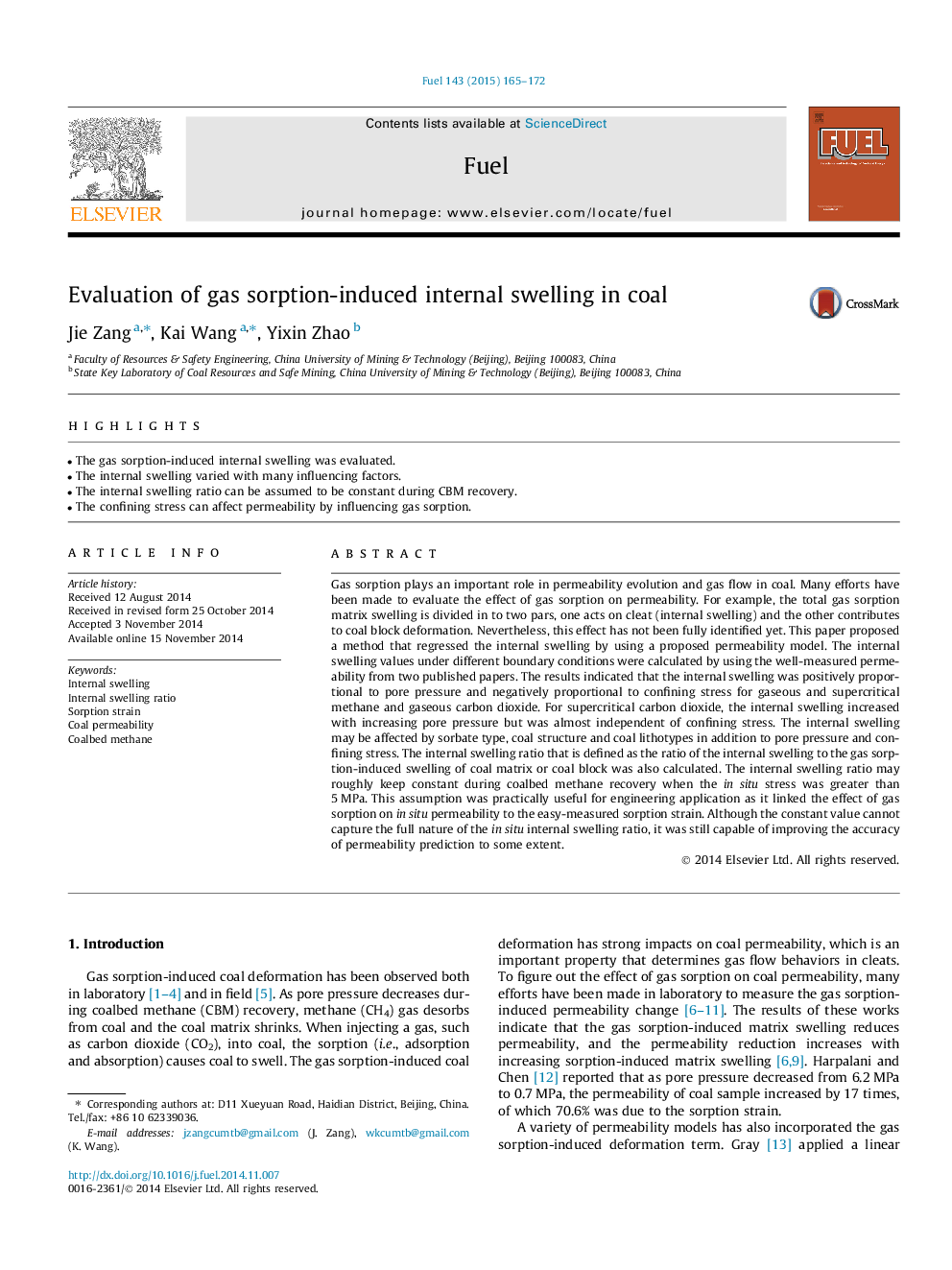| Article ID | Journal | Published Year | Pages | File Type |
|---|---|---|---|---|
| 6635756 | Fuel | 2015 | 8 Pages |
Abstract
Gas sorption plays an important role in permeability evolution and gas flow in coal. Many efforts have been made to evaluate the effect of gas sorption on permeability. For example, the total gas sorption matrix swelling is divided in to two pars, one acts on cleat (internal swelling) and the other contributes to coal block deformation. Nevertheless, this effect has not been fully identified yet. This paper proposed a method that regressed the internal swelling by using a proposed permeability model. The internal swelling values under different boundary conditions were calculated by using the well-measured permeability from two published papers. The results indicated that the internal swelling was positively proportional to pore pressure and negatively proportional to confining stress for gaseous and supercritical methane and gaseous carbon dioxide. For supercritical carbon dioxide, the internal swelling increased with increasing pore pressure but was almost independent of confining stress. The internal swelling may be affected by sorbate type, coal structure and coal lithotypes in addition to pore pressure and confining stress. The internal swelling ratio that is defined as the ratio of the internal swelling to the gas sorption-induced swelling of coal matrix or coal block was also calculated. The internal swelling ratio may roughly keep constant during coalbed methane recovery when the in situ stress was greater than 5Â MPa. This assumption was practically useful for engineering application as it linked the effect of gas sorption on in situ permeability to the easy-measured sorption strain. Although the constant value cannot capture the full nature of the in situ internal swelling ratio, it was still capable of improving the accuracy of permeability prediction to some extent.
Keywords
Related Topics
Physical Sciences and Engineering
Chemical Engineering
Chemical Engineering (General)
Authors
Jie Zang, Kai Wang, Yixin Zhao,
